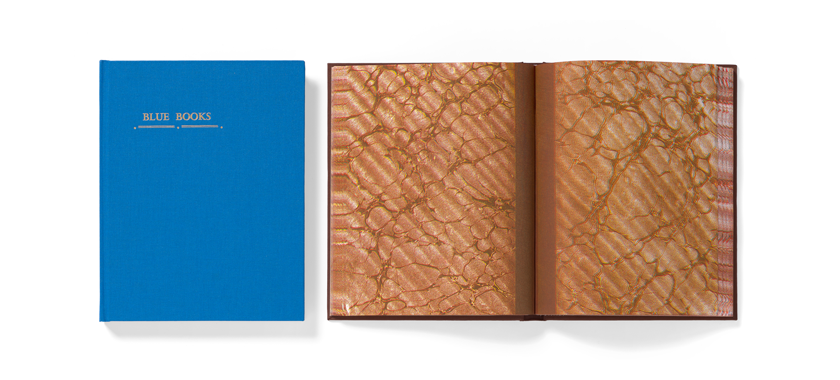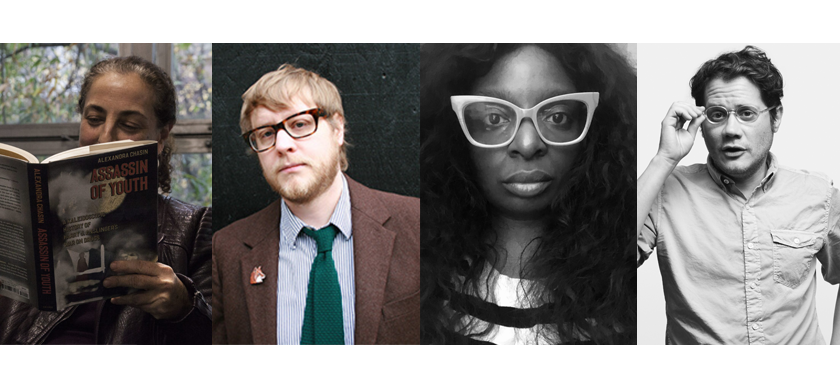
Business of Art | Writers on Publishing Part 2
Writers address the MFA question, talk about the submissions process, and share insights on agents.
Part 1 of our “Writers on Publishing” series acknowledged that the road to publishing is not always a straightforward one. Your relationship with your work, and with your writing community, is one that develops over time—and it can sometimes take years to get to the right place to publish. The conversation between NYFA-affiliated writers Alexandra Chasin (NYFA Board, Fellow in Fiction ’12), Omotara James (Fellow in Poetry ’20), and Ricardo Maldonado (NYFA Board, Fellow in Poetry ’11 and ’20, IAP Mentor), moderated by Brett Fletcher Lauer (NYFA Coach) and presented by NYFA Learning, was so brimming with tips and insights that we’ve expanded upon it here in Part 2 of the series. Read on for more.
Alexandra Chasin is the author of two books of fiction and two books of nonfiction, including Assassin of Youth: A Kaleidoscopic History of Harry J. Anslinger’s War on Drugs (University of Chicago Press, 2016) and Selling Out: The Gay and Lesbian Movement Goes to Market (Palgrave Macmillan, 2001).
Brett Fletcher Lauer is the author of the memoir Fake Missed Connections: Divorce, Online Dating, and Other Failures (Soft Skull, 2016) and A Hotel in Belgium (Four Way Books, 2014). Lauer is the deputy director of the Poetry Society of America and the poetry editor of A Public Space.
Omotara James is the author of the poetry collection Song of My Softening, forthcoming from Alice James Books, and chapbook Daughter Tongue, selected by African Poetry Book Fund in collaboration with Akashic Books for the 2018 New Generation of African Poets Box Set.
Ricardo Maldonado is managing director at the 92nd Street Y Unterberg Poetry Center and cohosts the “EMPIRE” reading series with Hafizah Geter. His debut book of poetry, The Life Assignment” was published by Four Way Books in 2020.
The MFA Question
The “MFA or not to MFA” question is not easily answered. However, what our writers underscore is that you don’t need an MFA degree to succeed as a writer. Maldonado’s sharpest readers, the people he relies on most for review and feedback on his writing and those who make his work more legible to himself, are from relationships he built outside of his MFA program. He met readers at CantoMundo, and has met a lot of writers through his work at the 92Y Unterberg Poetry Center where he runs a poetry contest. He says: “The more I develop as a writer by reading contemporary work, reading the canon, and reading the alternative canon, the more I find potential models, potential friends.” In addition, as a reader, Maldonado makes a conscious effort to look beyond privilege and dismantle it, recognizing his own MFA pedigree.
He advises that the 92nd Street Y offers writing workshops in all genres, many of which come with financial aid offers and are “as good as an MFA.” According to Maldonado, “You do not need an academic institution to engage with your work and the work of others in a critical way.”
James notes that there is an overlap between MFA programs and literary foundations. For example, she belongs to Cave Canem, a watering hole for Black poets, as well as Lambda Literary, a home for LGBTQIA+ writers of all genres. She says that sometimes there are folks who already have MFAs, and sometimes people are inspired to pursue an MFA as a result of these organizations.
Chasin encourages writers to take advantage of the public events organized by writing programs. “Events, go to events, events are often extremely accessible,” she says. If you don’t go the MFA route, or even if you do, Chasin advises to keep all roads open. “If you have an undergraduate professor who might understand you in some way, go back and walk through that door. Don’t be shy, tap the resources you already have available.”

What’s Worked
Chasin suggests publishing short pieces first on the way to a book collection. For her first book of fiction, she tried very hard to place individually first, thinking that it would make a book more likely. She did a large number of submissions, receiving rejections 14 out of 15 times. “The important thing for me was to keep going,” she says, eventually receiving the “Yeses” she needed and being set on the path to publish her book. She also suggests looking online for publications that might be relevant, drafting a cold cover letter, and submitting.
James tried to get a full-length manuscript published right away, and found that submitting to a prize helped others take note of her work. Though she didn’t win, she was solicited to send her work to the African Poetry Book Fund, which featured her work in their annual chapbook set. “Even though you might not get what you thought you wanted, you’ll find it’s just as rewarding to send your work to a place that will see your work. If I had won the prize, I would have been ineligible for many other opportunities.” This underscores the value of knowing when previously public or published works (even if online) can disqualify you from future publishing opportunities. James also encourages poets to publish a chapbook and to see where other like-minded writers and poets are submitting their work and being featured.
How to Submit and How to Find an Agent
The protocol for both is similar, and at the root of any successful submission is 1) doing the research and 2) targeting your outreach.
As a first course of action, Lauer recommends that writers of all stripes bookmark Poets & Writers. It’s a magazine and a website that offers grants and contests in all genres as well as a section on agents that includes agent profiles, who they’ve published, and other helpful information. His experience with an agent is that it requires research. Once you’ve done your research, he suggests querying them with either a descriptive paragraph or a first chapter. Cardinal rule number 1: “If you’re sending something to an agent, sending something to a literary magazine, show a knowledge and appreciation for the work that they do.”
On the subject of targeting, James has found far more success with targeted submissions: “Meaning submissions for which I’ve read the journal more than once, more than just before submitting. As someone who has maybe found an author or poet that I admire (whose work speaks to my work) to see where they have published.” She then would read those journals and aim to publish there.
Wearing her editor cap, she acknowledges that “the slush pile is real” and notes that the submissions that stand out to her “are the ones in which the cover letter isn’t too long. It might say one or two words that frame and prepare me to read their piece or their entire submission. I appreciate that. It’s like being primed a little. I also really get the urgency to want to say your say.” And if you approach a publisher in person, context is important. “Choose your moment and target your work to certain spaces, that just shows that you’re paying attention. That will pay off.”
Chasin emphasized the difference between agented and non-agented submissions. “It’s a two-tiered system. On the top is the Big Four—Penguin Random House, Macmillan, Hachette Book Group, and HarperCollins—with fewer and fewer large publishing institutions eating the smaller ones. That is largely the world of agented work. Below the line, there are all kinds of genres and sub-genres and inter-genres. Without an agent, there is little access to the Big Four but on the other side are tons and tons of smaller presses. In terms of nonfiction, you need a sample chapter or a completed introduction, and a really more exhaustive cover letter and a resume. It’s what an agent would use to get your work to a publisher and you’d need this if you were going the self-publishing route too.”
Two great ways to find both publishers and agents? Says Maldonado: “Acknowledgement sections should be your friend. Other than Poets & Writers, that’s your best friend.”
You can find more articles on arts career topics by visiting the Business of Art section of NYFA’s website. Sign up for NYFA News and receive artist resources and upcoming events straight to your inbox.
NYFA Learning provides artists, creators, students, and arts administrators with tools, strategies, and advice for building sustainable careers. We collaborate with organizations, academic institutions, and cultural partners to bring our programs to a broad range of national and international creative communities.